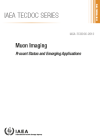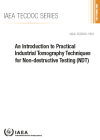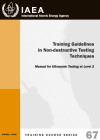Non-destructive testing methods are used in industry to evaluate the integrity and properties of material or components without causing damage to the tested object. Aside from industrial radiography, four of the most common methods are: ultrasonic radiography; and liquid penetrant, magnetic particle and eddy current inspections.
Other non-destructive testing
Non-destructive testing is a key tool for quality control, safety and reliability. The IAEA promotes the use of non-destructive testing technology to maintain the stringent quality control standards for the safe operation of nuclear and other industrial installations. It helps its Member States train staff in applying the technology and provides necessary equipment.
While there are hundreds of methods available, the most common are:
- Industrial radiography, which uses short X-rays, gamma rays and neutrons to penetrate materials;
- Ultrasonic radiography, which uses mechanical vibrations similar to sound waves;
- Liquid penetrant inspection, which can locate surface-breaking defects in non-porous materials;
- Magnetic particle inspection, which can detect surface and slightly subsurface discontinuities in ferromagnetic materials; and
- Eddy current testing, which uses electromagnetic induction to detect flaws in conductive materials.
The Agency’s long-standing involvement in the non-destructive testing programme has led to the establishment of national teams that provide services to industries, training centres and certifying bodies that are responsible for the training and certification of personnel involved in non-destructive testing. In many institutions, these efforts have led to a state of self-sufficiency in this area of technology.
To guide the IAEA experts involved in the training programmes, and to achieve some level of international uniformity and harmonization of training materials and competence of personnel, the Agency has also published a variety of training guidelines and related publications.







